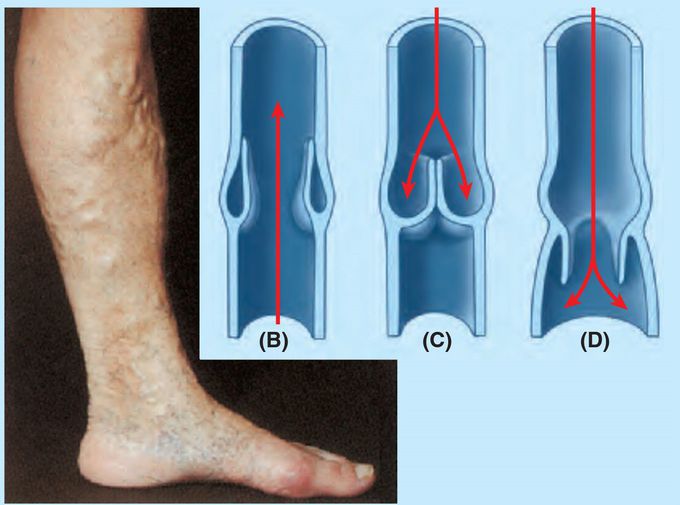

Varicose Veins, Thrombosis, and Thrombophlebitis
Frequently, the great saphenous vein and its tributaries become varicose (dilated so that the cusps of their valves do not close). Varicose veins are common in the posteromedial parts of the lower limb and may cause discomfort . In a healthy vein, the valves allow blood to ow toward the heart (B) while keeping blood from owing away from the heart (C). Valves in varicose veins (D) are incompetent due to dilation or rotation and no longer function properly. As a result, blood ows inferiorly in the veins, producing varicose veins. Deep venous thrombosis (DVT) of one or more of the deep veins of the lower limb is characterized by swelling, warmth, and erythema (in ammation and infection). Venous stasis (stagnation) is an important cause of thrombus formation. Venous stasis can be caused by: • Incompetent, loose fascia that fails to resist muscle expansion, diminishing the effectiveness of the musculovenous pump. Varicose veins . (C) (D) • External pressure on the veins from bedding during a prolonged hospital stay or from a tight cast or bandage. • Muscular inactivity (e.g., during an overseas aircraft ight). DVT with in ammation around the involved veins (thrombophlebitis) may develop. A large thrombus that breaks free from a lower limb vein may travel to a lung, forming a pulmonary thromboembolism (obstruction of a pulmonary artery). A large embolus may obstruct a main pulmonary artery and may cause death.

